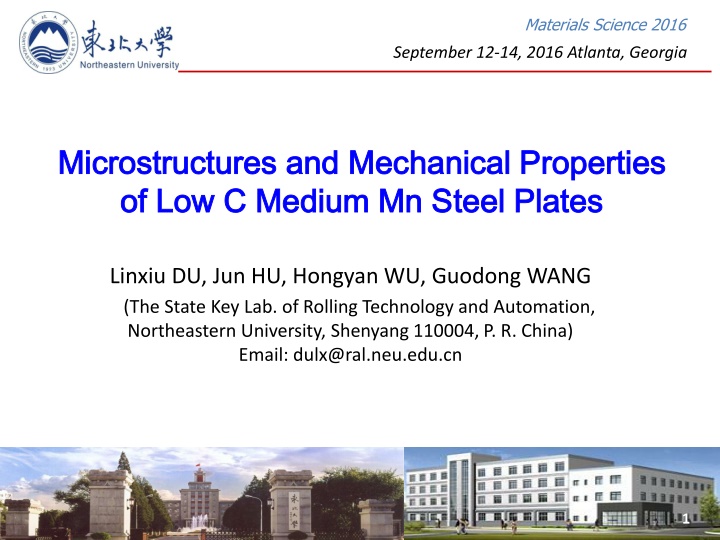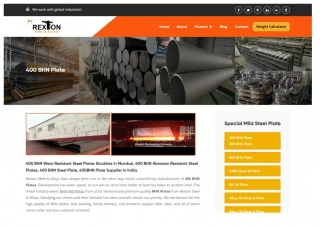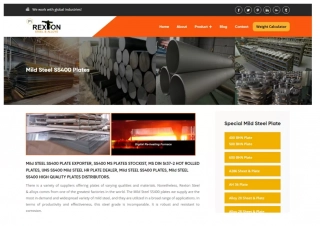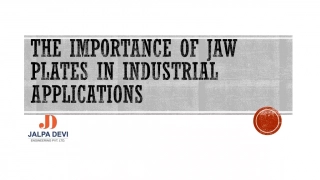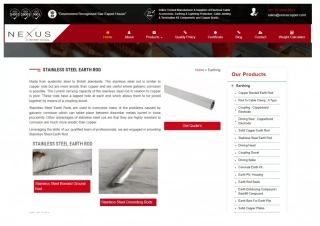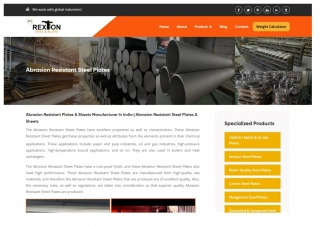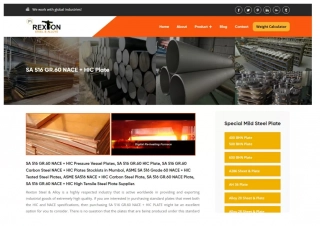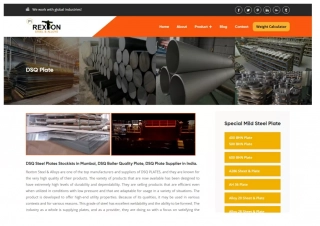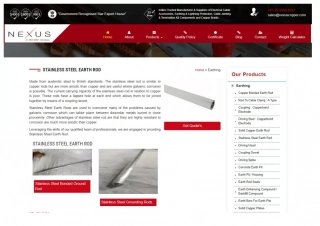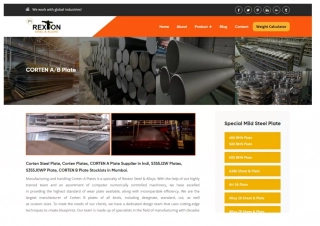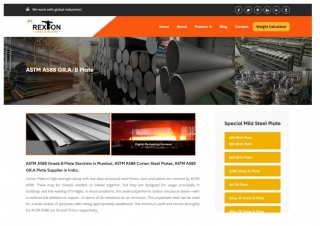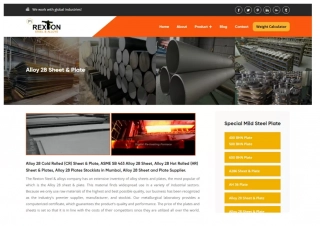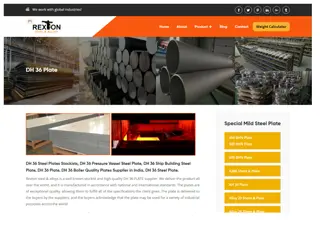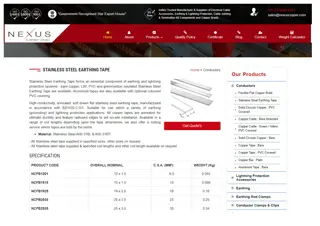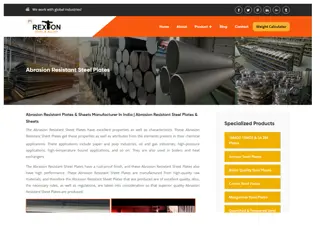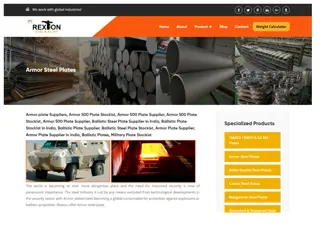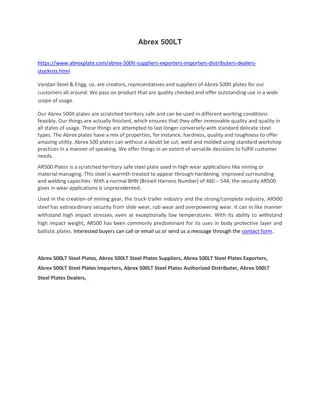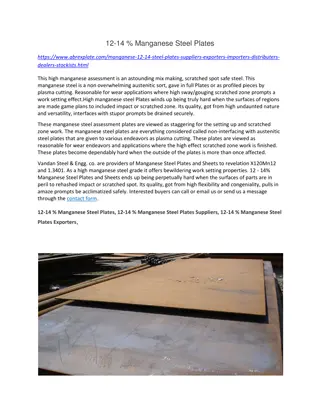Microstructures and Mechanical Properties of Low C Medium Mn Steel Plates
Low carbon (0.2% C) Medium Mn (5-8% Mn) steel plates with fine microstructured strengthening and TRIP effect of austenite exhibit high strength and good elongation. The use of medium Mn steel can lead to excellent toughness and address challenges in producing high toughness heavy plates, such as microstructural inhomogeneity, cost, weldability, and production complexity. The composition includes 0.04-0.1% C and 4-6 wt.% Mn to enhance hardenability and improve homogeneity of microstructure and mechanical properties.
Download Presentation

Please find below an Image/Link to download the presentation.
The content on the website is provided AS IS for your information and personal use only. It may not be sold, licensed, or shared on other websites without obtaining consent from the author.If you encounter any issues during the download, it is possible that the publisher has removed the file from their server.
You are allowed to download the files provided on this website for personal or commercial use, subject to the condition that they are used lawfully. All files are the property of their respective owners.
The content on the website is provided AS IS for your information and personal use only. It may not be sold, licensed, or shared on other websites without obtaining consent from the author.
E N D
Presentation Transcript
Materials Science 2016 September 12-14, 2016 Atlanta, Georgia Microstructures and Mechanical Properties Microstructures and Mechanical Properties of Low C Medium Mn S of Low C Medium Mn Steel teel Plates Plates Linxiu DU, Jun HU, Hongyan WU, Guodong WANG (The State Key Lab. of Rolling Technology and Automation, Northeastern University, Shenyang 110004, P. R. China) Email: dulx@ral.neu.edu.cn 1
Contents Introduction Introduction Composition and Process Composition and Process Microstructure and Mechanical Properties Microstructure and Mechanical Properties Industrial Test Industrial Test Summary Summary 2
Introduction Introduction Low C - Medium Mn steel is one of the research highlights Low carbon(0.2%C) Medium Mn(5-8%Mn) are being developed as third generation advanced high strength steel (AHSS). The hot-rolled strip steel with martensite microstructure was intercritical annealed in the ferrite-austenite region. Metastable austenite was stabilized at room temperature because the austenite become highly enriched in Mn during the annealing process. The high strength of 700~1600MPa was attributed to fine microstructured strengthening, and the good elongation of 20~60% was due to the TRIP effect of austenite. Tempered-martensite Reverse austenite Martensite Strength and elongation of AHSS 3
Introduction Introduction Medium Mn steel can also obtain excellent toughness Niikura and Morris conducted multi-stage quenching and inter-critical temper heat treatment on 0.04C-5Mn-0.2Mo steel. Yield strength 497MPa Tensile strength 669MPa Elongation 41.3% Impact energy at -196 190J The good properties are attributed to a symbiotic influence between the grain refinement treatment and the introduction of thermally stable retained austenite during tempering 4
Introduction Introduction Above works inspire us to have an idea to produce medium Mn plates with large thickness, for solving the problems in the production of high toughness heavy plates at present: Microstructural inhomogeneity along the thickness direction High cost due to addition of expensive alloying elements, such as Ni, Mo and Cr Poor weldability due to high carbon equivalent High yield ratio Complicated production procedure of multi-stage quenching and tempering Is it possible to produce Medium Mn steel plates? 5
Composition and Process Composition and Process Composition: 0.04-0.1C and 4-6 wt.% Mn Alloying with medium Mn was to enhance hardenability and improve the homogeneity of microstructure and mechanical properties throughout the thickness of the heavy steel plate.Austenite was stabilized by Mn enrichment. CCT Austenite Martensite could be formed at cooling rate from 0.5-30 /s Fe-C phase diagram of 4.5%Mn. (From M.J. Merwin. Iron & steel Technology, Oct. 2008) Low carbon design was preferred from the view point of weldability and reduced cementite content. Cu, Ni, and Cr were added to enhance corrosion resistance 6
Composition and Processes Composition and Processes TMCP Process: DQ+Tempering The steel slab was heated to 1200 C for 3h, and then hot-rolled to a plate of ~120 mm thickness. The plate was directly water-quenched to room temperature using accelerated cooling system. The water-quenched plates were tempered at temperature of 620~680 C for 10~30min. Tempering in this region Austenite Mn Austenite was formed during inter- critical tempering Amount of element in fcc 7
Microstructures and properties Microstructures and properties Water-quenched microstructure after hot-rolled TEM OM Fine martensite laths with high fraction of dislocations TEM SEM Fine needle-shaped cementite in martensite laths 8
Microstructures and properties Microstructures and properties Tempered microstructure: effect of tempering time Tempering at 650 for 10min Volume fraction of austenite increased with time, and cementite was gradually dissolved. Tempering at 650 for 30min Mn partitioning during inter-critically tempering 9.75%Mn Austenite 1.94%Mn Ferrite 9 Reversed austenite was stabilized by highly Mn enrichment.
Microstructures and properties Microstructures and properties Tempered microstructure: effect of tempering temperature 10.4% 22.2% 28.7% Tempering at 680 Tempering at 620 As increase in tempering temperature, the volume fraction of austenite was increased. Tempering at 650 As tempering at 680 At room temperature, some austenite grains were less stable due to weak Mn enrichment, resulted in the formation of twin martensite. Tempering at 680 10
Microstructures and properties Microstructures and properties Mechanical properties: effect of tempering temperature 1100 0.95 0.90 1000 0.88 Tensile strength 0.85 900 0.80 Yield ratio Strength/MPa 0.75 800 0.70 700 0.65 690MPa 0.60 600 Yield strength 0.55 500 0.50 630 640 Temperature/ 650 660 670 630 640 Temperature/ 650 660 670 Yield strength decreased with temperature Tensile strength increased due to TRIP effect Yield ratio decreased with temperature Because of decreased stability of austenite 260 36 240 -60 35 220 200 34 180 33 Elongation/% 160 32 Energy/J 140 31 120 630 640 650 660 670 30 100 29 80 60 28 40 27 20 26 0 25 -60 -40 -20 0 20 630 640 Temperature/ 650 660 670 Temperature/ Impact energy decreased with temperature 11 Elongation first increased an then decreased
Microstructures and properties Microstructures and properties Mechanical properties: effect of tempering time at 650 1.0 800 Yield strength/MPa 0.8 Yield ratio 600 0.6 400 0.4 40 50 60 Tempering time 70 80 90 100 40 50 60 Tempering time 70 80 90 100 Yield strength decreased with time 40 Yield ratio decreased with time 280 260 35 240 30 Impact energy/J Elongation/% 220 25 200 20 180 20 15 160 10 40 50 60 70 80 90 100 40 50 60 70 80 90 100 Tempering time/min Tempering time/min Impact energy increased with time Elongation increased with time 12
Microstructures and properties Microstructures and properties Typical heavy steel Chemical composition: 0.1C-5Mn Steel plate thickness: 80 mm Tempering procedure: 650 for 30min Tensile properties Tensile strength /MPa 875 880 Steel Number Yield strength /MPa 770 772 Elongation /% 25.0 27.5 Reduction in area /% 65.4 63.6 Yield ratio 1/2 thickness 1/4 thickness 0.88 0.88 Charpy impact energy Steel number 1/2 thickness 1/4 thickness 20 C 209 213 0 C 189 190 -20 C 184 180 -40 C 179 185 -60 C 165 168 1/2 Dimple fractures 1/4 Excellent microstructure and properties homogeneity along thickness was obtained. Impact fractures consisted of dimples. 13
Microstructures and properties Microstructures and properties TRIP effects improved ductility and toughness Stress-strain curves Work hardening rate curves Volume fraction of austenite Austenite transformed to martensite as straining, and toughness and ductility were improved. Twin-type martensite formed under 0.05 tensile strain 14
Microstructures and properties Microstructures and properties Some of above works have been published: 1. Jun Hu, LinXiu Du, GuoSheng Sun, Hui Xie, R.D.K. Misra. The determining role of reversed austenite in enhancing toughness of a novel ultra-low carbon medium manganese high strength steel. Scripta Materialia, 2015, 104: 87-90. 2. Jun Hu, LinXiu Du, H. Liu, G.S. Sun, H. Xie, H.L. Yi, R.D.K. Misra. Structure- mechanical property relationship in a low-C medium-Mn ultrahigh strength heavy plate steel with austenite-martensite submicro-laminate structure. Materials Science and Engineering A, 2015,647: 144-151. 15
Industrial tests Industrial tests Continuous casting slab and macroscopic examination C and Mn content along thickness Thickness C/% 1/2 0.08 1/4 0.07 1/8 0.07 1/16 0.07 Mn/% 5.63 5.43 5.57 5.49 The quality of slab is very good. No serious segregation was found. The plate subjected to controlled rolling and controlled cooling Low carbon medium Mn heavy plate steel has been successfully fabricated in two steel factories, and the high yield strength 690MPa, excellent impact toughness at -60 120J, and low yield ratio 0.88 were obtained. Moreover, the impact energy at -60 was 100J after 5% straining ageing. 16
Industrial tests Industrial tests Good weldability Mixed grain Base metal Welding seam Fusion line Coarse grain Fine grain Impact energy at welding joints Fusion line +1mm Fusion line +2mm Fusion line +3mm Fusion line +5mm Fusion line +7mm Welding seam Fusion line Notch location Impact energy at -40 /J 103 86 61 103 148 120 140 Without using the pre-heating and the heat treatment after welding, the welding joints has good impact toughness and high strength. 17
Summary Summary Medium Mn can significantly increase the hardenability, and the fine martensite can be formed throughout the thickness of heavy steel plate during water quenching. Some austenite can be formed during inter-critically tempering, so the sub-micron laminated martensite-austenite structure was obtained. Fine tempered martenite laths greatly increased the yield strength, and the improvement in ductility and low temperature toughness is attributed to the TRIP effect of high fraction of reversed austenite. Low carbon medium Mn steel plates has been successfully fabricated in steel factories, and good combination of high strength, good toughness, and excellent weldability were obtained. 18
Materials Science 2016 September 12-14, 2016 Atlanta, Georgia Thanks for your attention! 19
